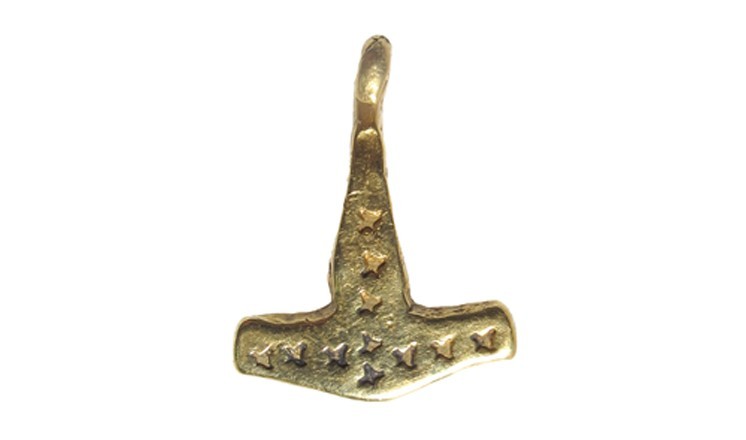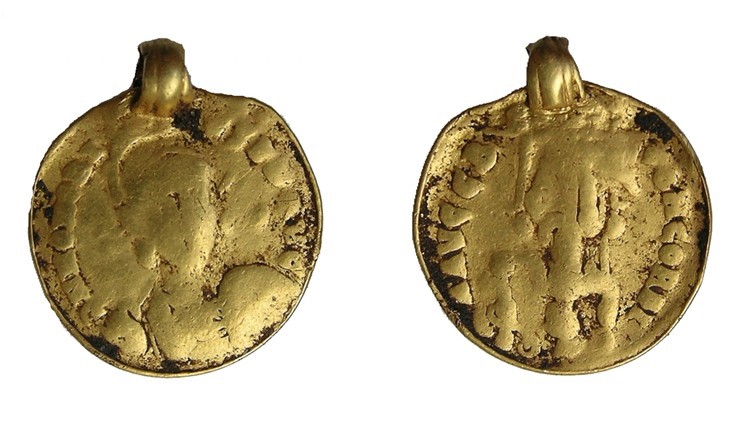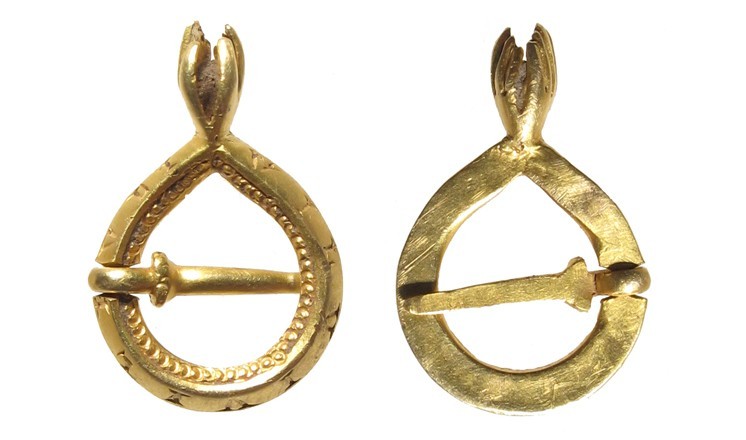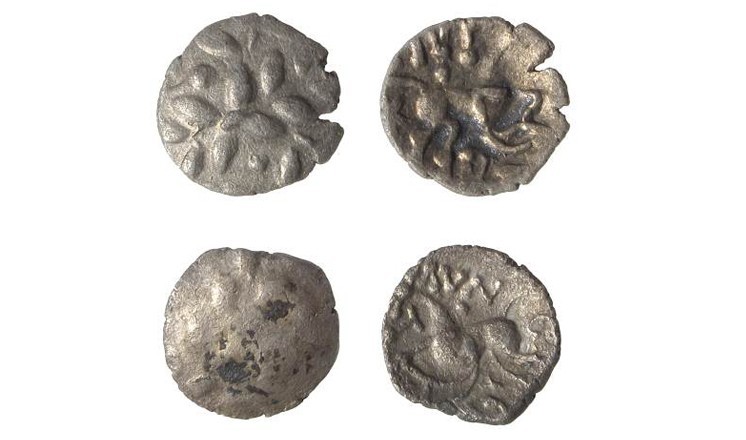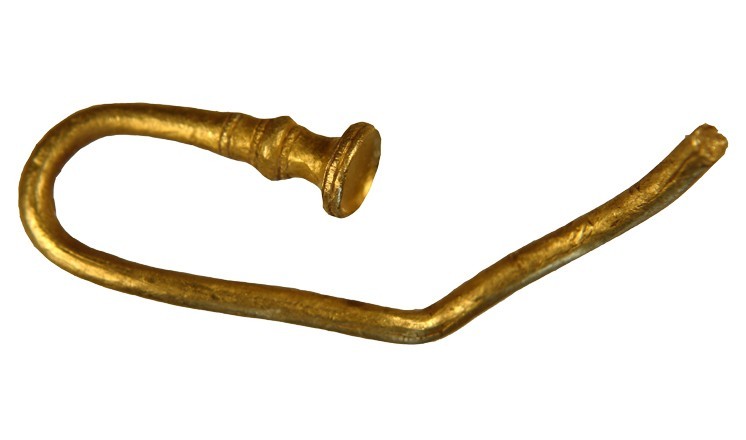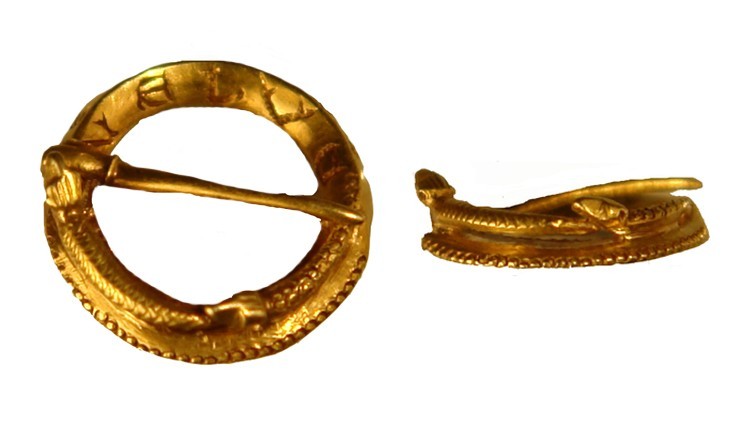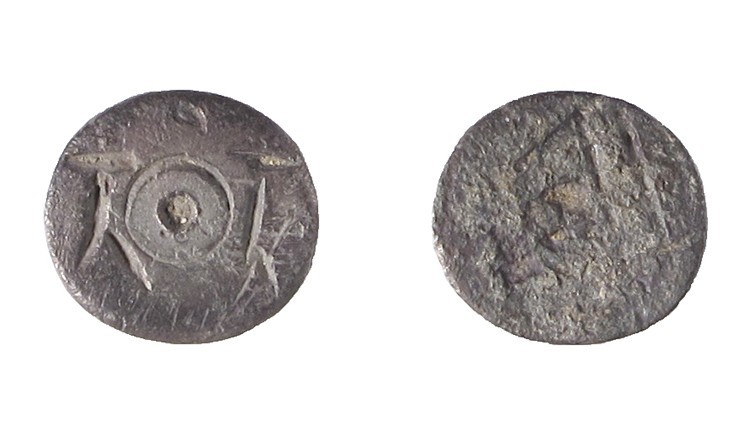Some new archaeological acquisitions
RSS FeedLincolnshire is a county with a wonderfully rich archaeological heritage, and the museum's archaeological holdings are a fundamental element of our collections and our displays.
The museum acquires new archaeological items throughout the year, in accordance with our strategic collecting priorities. This post briefly introduces some of our newest acquisitions, arranged chronologically by period, and which includes some unusual and significant items. Look out for them appearing the archaeological gallery displays in due course.
Iron Age
Gold torc fragment from Caistor
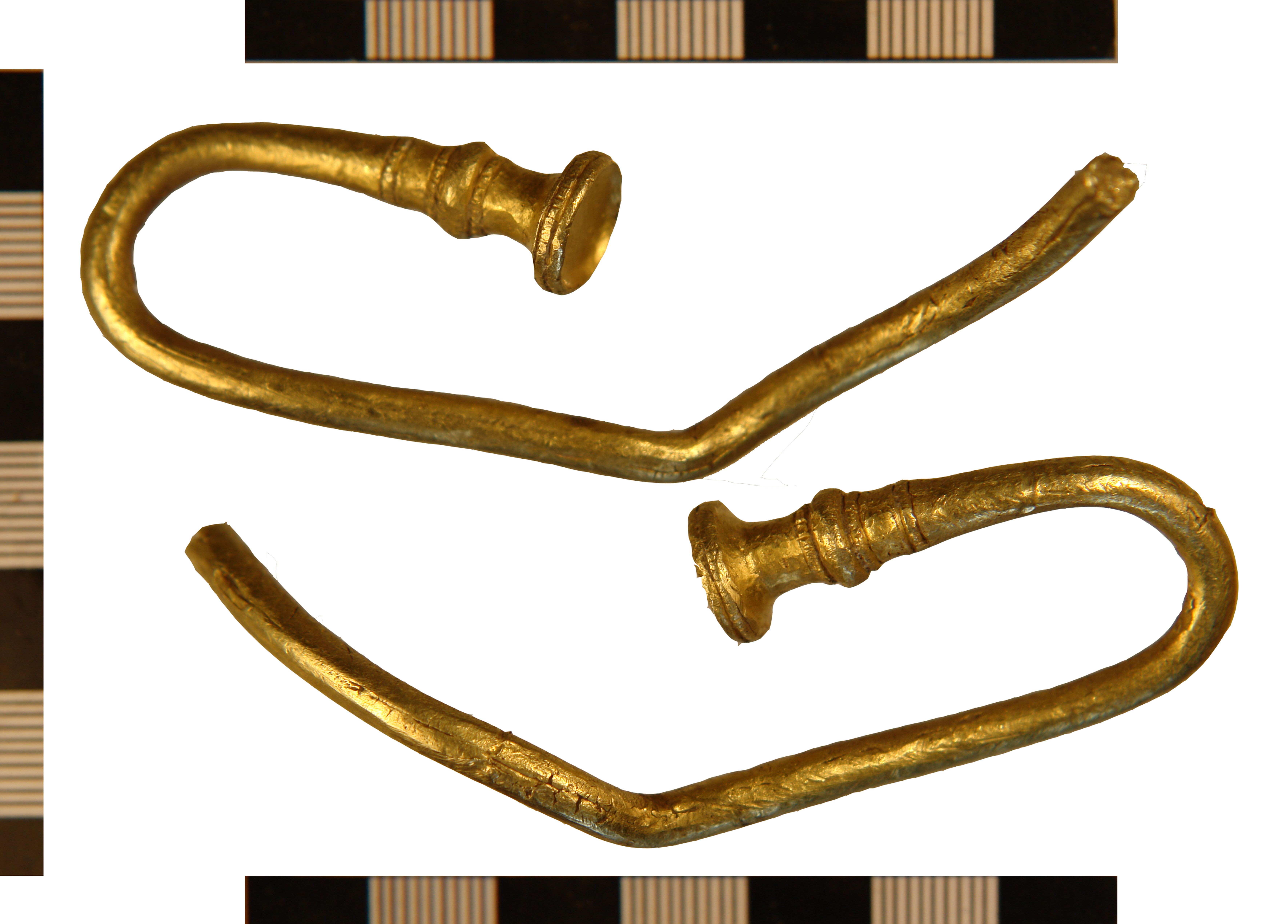
Neck torcs are among the most iconic objects of the Iron Age, and came to be a symbol to the Romans of an Iron Age warrior elite in Britain and Gaul. The most famous torc finds in Britain come from the Snettisham hoard, now in the British Museum. This fragment of a torc has one single, buffer shaped terminal surviving. The body of the torc is 4-4.5mm in diameter and the surviving terminal is circular and concaved. Metallurgical analysis has shown that the torc comprises 71-73% gold, 24-26% silver and 3% copper.
Although only surviving as a fragment, this torc is an important find as it is currently the only example of its type in gold known from Britain. Torcs of this form are well attested in northern France and the Netherlands, but have only previously been found in copper alloy in Britain. The torc dates to between 400 and 300BC. The likelihood that this torc was manufactured on the continent makes it an important piece of evidence for cultural and economic connections between the Corieltavi tribe and the continent in the centuries before the Roman invasion.
The torc was acquired with the kind assistance of the Friends of Lincoln Museums and Art Gallery
Inscribed silver coins from Caistor
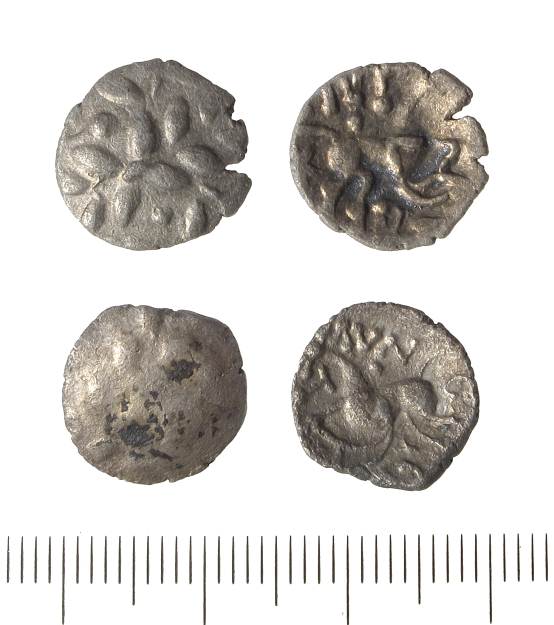
One of the museum's priorities is to increase our collections of Iron Age coinage to reflect the large numbers of them being found in Lincolnshire, and to ensure that our collections are an accurate reflection of the archaeological evidence. These two inscribed silver units are therefore an important addition to our collections. The coins were discovered at Caistor, and were corroded together when found. Silver coinage was minted in the very late Iron Age, from about 30BC, but coins with inscriptions on, like these, are at the very end of the sequence, being minted between c.AD20 and AD50 - on the very cusp of the Roman invasion and perhaps even minted as the IX Legion was advancing northwards into Lincolnshire. The inscriptions are personal names, and represent the earliest names of rulers we have from the county. One coin (the top one in the photograph above) reads 'IIVP RASV'. The other coin reads 'AVN COST'. These two names are known from a number of gold and silver coins, but the relationship between the rulers and their chronology is not well understood. Were they successive rulers or did they rule jointly over different parts of the tribe's territories? Both coins bear the image of a wreath on the obverse, a motif derived from a classical laurel wreath worn by the god Apollo on coins of Philip II of Macedon, the archetype used by British Iron Age coin producers. The reverses feature galloping horses, a common totemic animal on Corieltavian coinage.
Roman
Ring bezel from Great Sturton
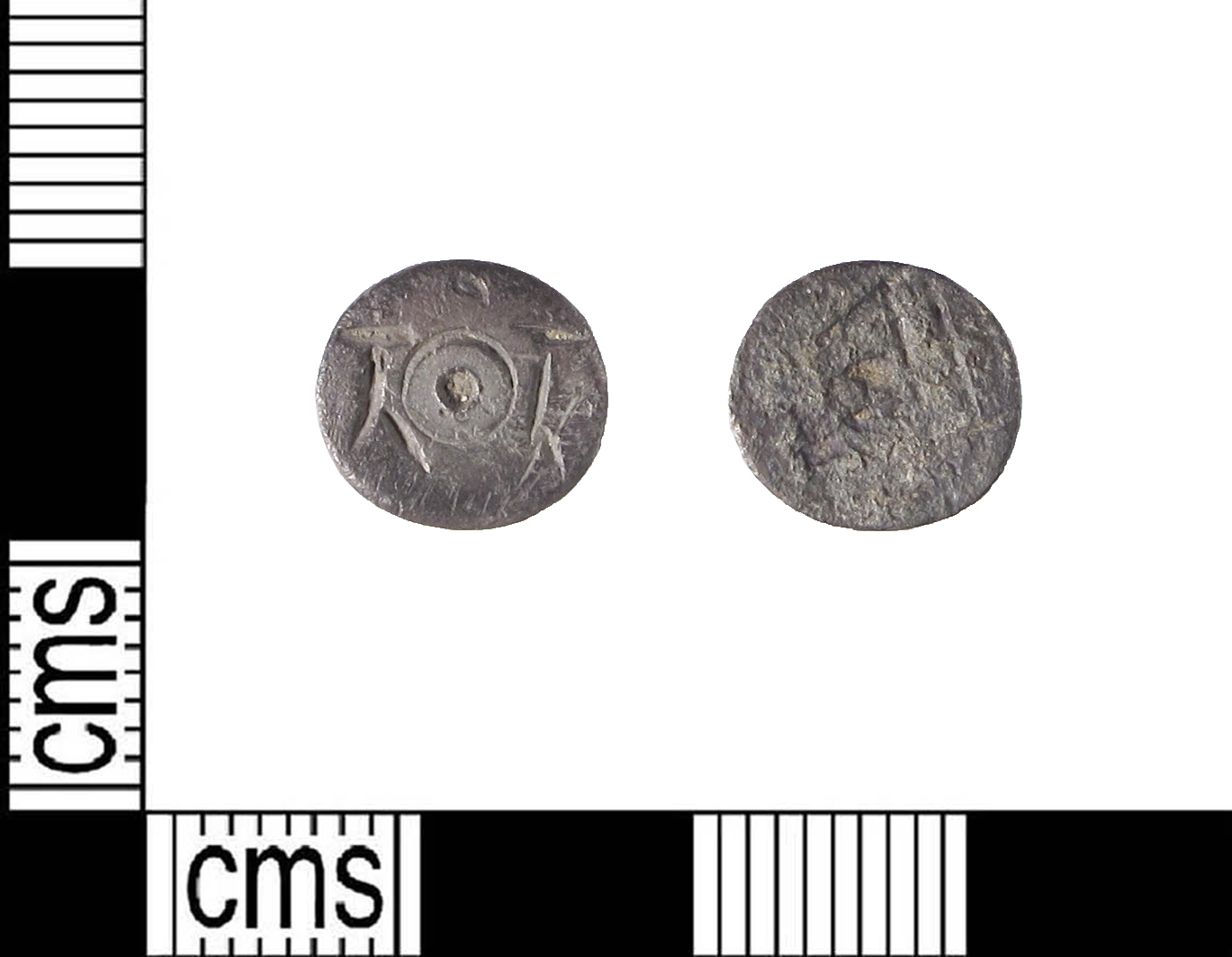
This simple oval silver disc was once set into a Roman finger ring. It is inscribed with the letters 'TOT', which makes it part of a series of rings well attested in Lincolnshire. The origins of the legend were debated for many years, but it is now accepted that the letters are a dedication to the Gaulish war god 'Totatis' (or 'Toutatis' as it is also written). More than 70 rings with this legend, or a variation of it, are recorded and the museum collections include a representative sample of them. The rings were possibly worn by followers of his cult, but may also have been made for votive deposition, placed deliberately into the ground as offerings.
The bezel was kindly donated to the museum by Mr J Lucchesi
Early Medieval
Thor's hammer pendant from Spilsby
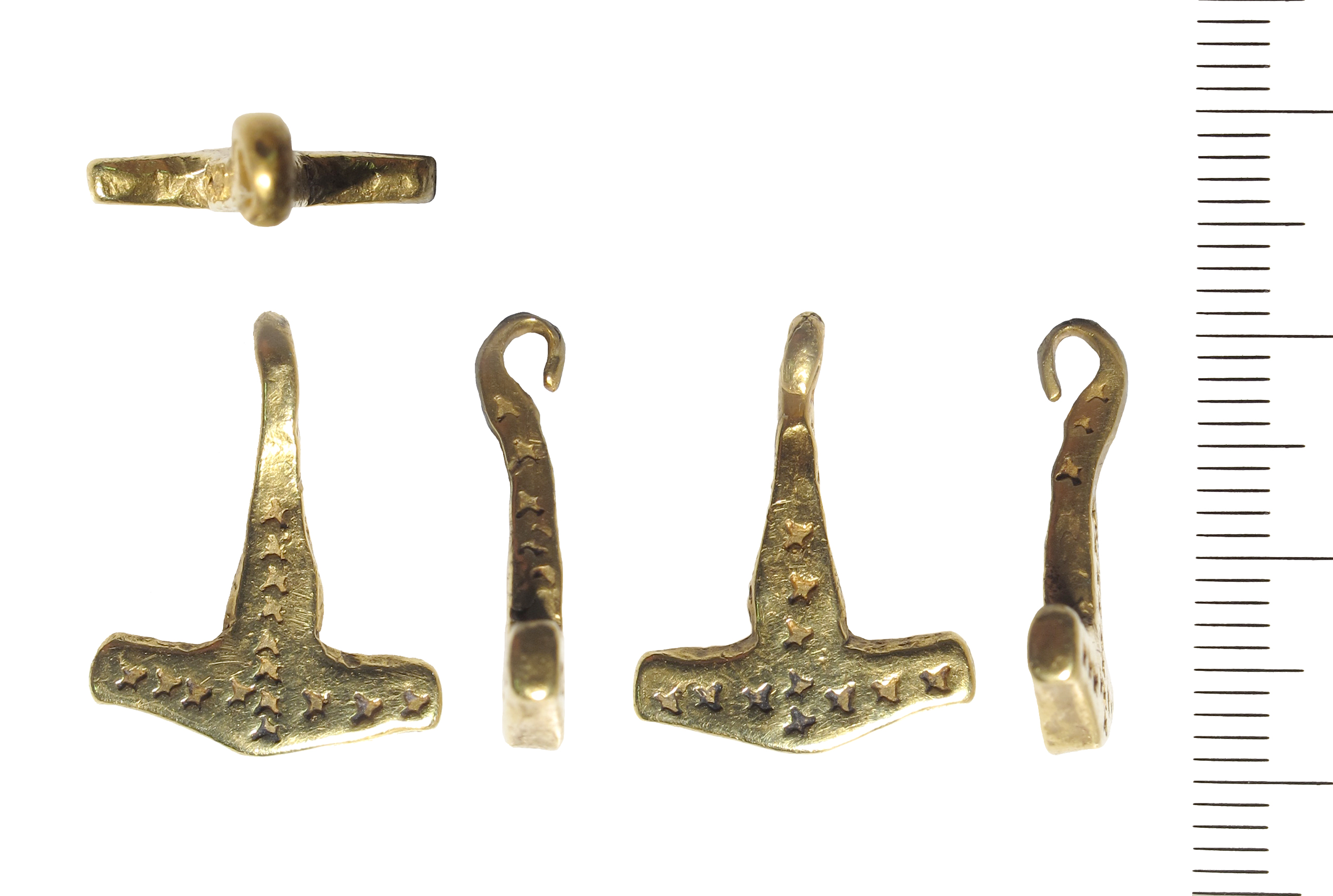
This pendant dates to the late 9th or early 10th Century and is in the form of a double headed hammer. Such hammer motifs are associated with 'Mjollnir', the hammer wielded by the Norse God Thor. These pendants are well known across the Viking world, though most British examples are silver or copper alloy and are undecorated. This example is covered with small punched quatrefoils. Its signifiance comes from the fact that it is only the second gold example of such a pendant found in Britain (the other being from South Lopham in Norfolk). The level of decoration suggests that the pendant may have been made in Scandinavia and transported to Lincolnshire, perhaps while being worn by its owner.
The pendant was acquired with the kind support of the V&A Purchase Grant Fund, the Headley Trust and the Friends of Lincoln Museums and Art Gallery
Honorius coin pendant from Horncastle
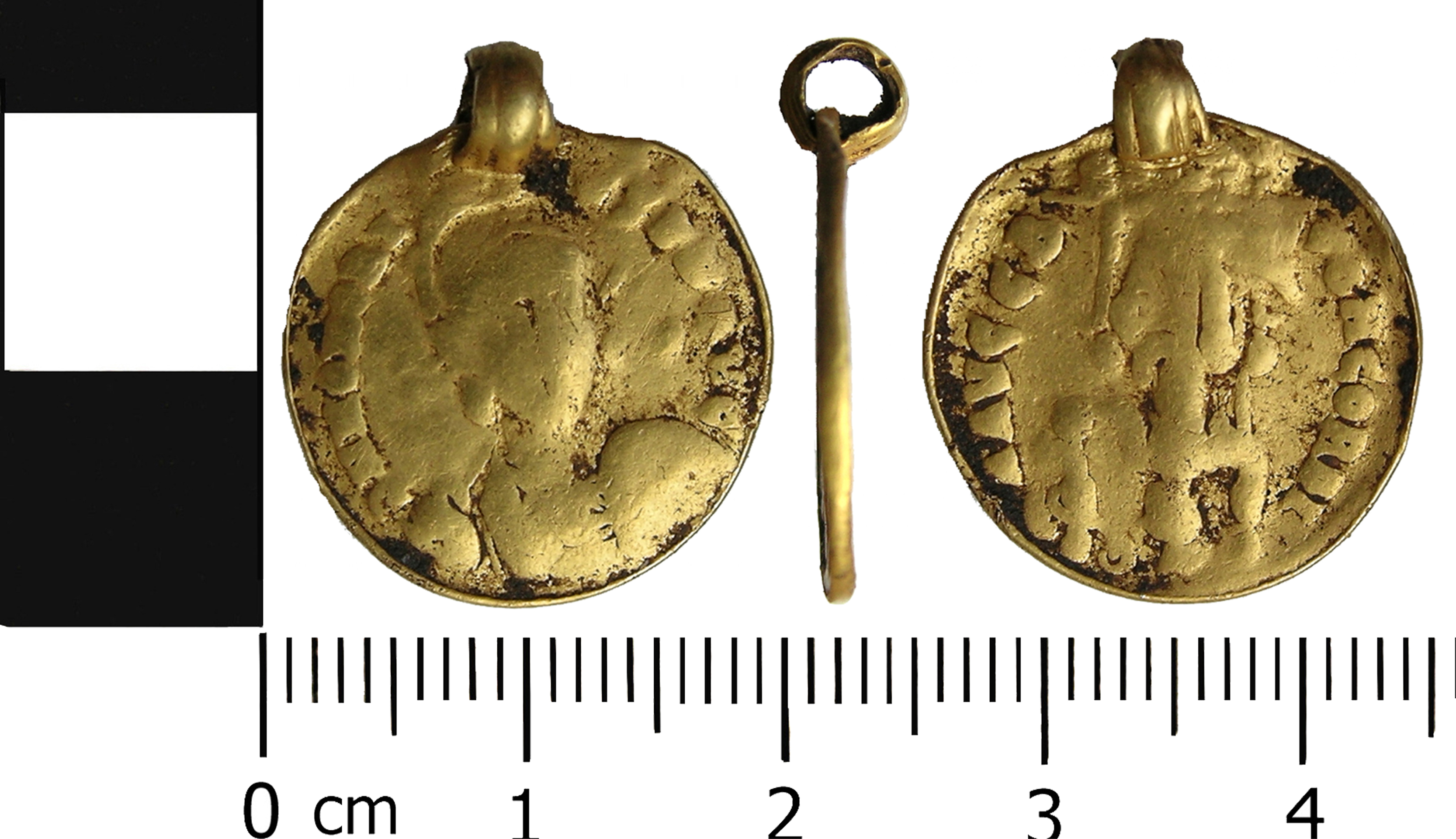
Some of the most interesting artefacts in archaeology are those which have a life beyond their original maker's intentions, and remind us that we are far from the first society to have valued objects of clear antiquity. This late Roman coin, a gold solidus minted between AD397 and AD402, was converted into a pendant through the addition of a suspension loop in the second half of the 7th Century. The original coin was produced with the image of the Emperor Honorius, during the time of his joint rule with Arcadius. Honorius has a particular fame in Romano-British archaeology as being the Emperor who issued the infamous and much debated 'Rescript of Honorius' of AD410, telling the Britons to look after their own defences. The reverse of the solidus (upside down in the pendant) depicts the personification of Constantinople, seated, and the legend 'CONCORDIA AVGG' - the harmony of the Emperors.
Medieval
Annular brooch with snakes from Tetney
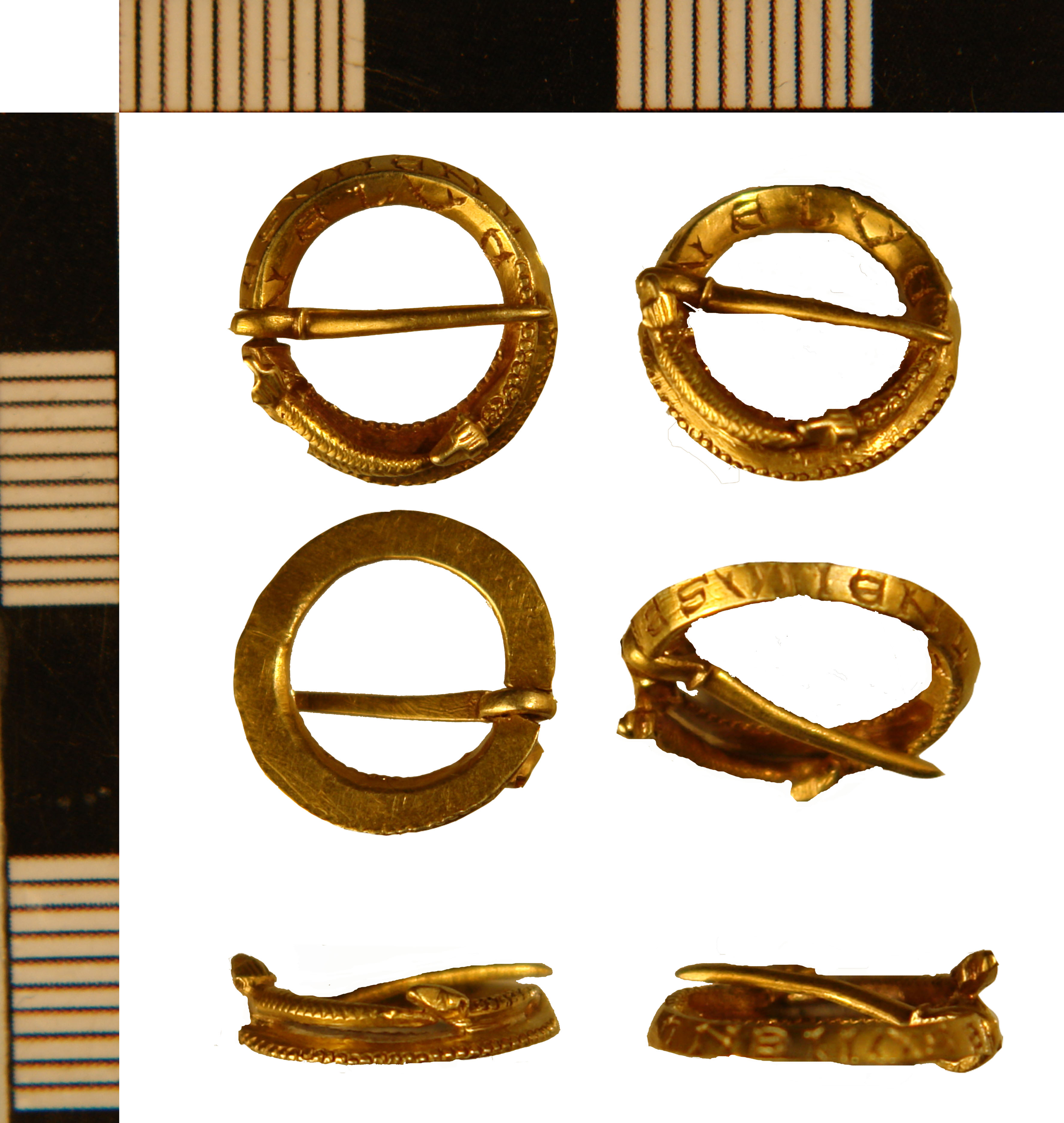
This unusual and tiny gold annular brooch is a miniature masterpiece. The top of the brooch features a pair of serpents, their bodies following the outline of the brooch, and most likely depicted in an act of coupling. An inscription on the outside of the brooch reads 'E S V I E N L N E L V O'. Although slightly garbled, it is believed to be a version of 'Je suis ici en lui d'amor' - I am here in place of a love or friend'. Such romantic images are commonly found on 13th Century jewellery, and it is likely that the brooch was a gift between lovers.
The brooch was acquired with the kind assistance of the Friends of Lincoln Museums and Art Gallery
Annular brooch with clasped hands from Kirton
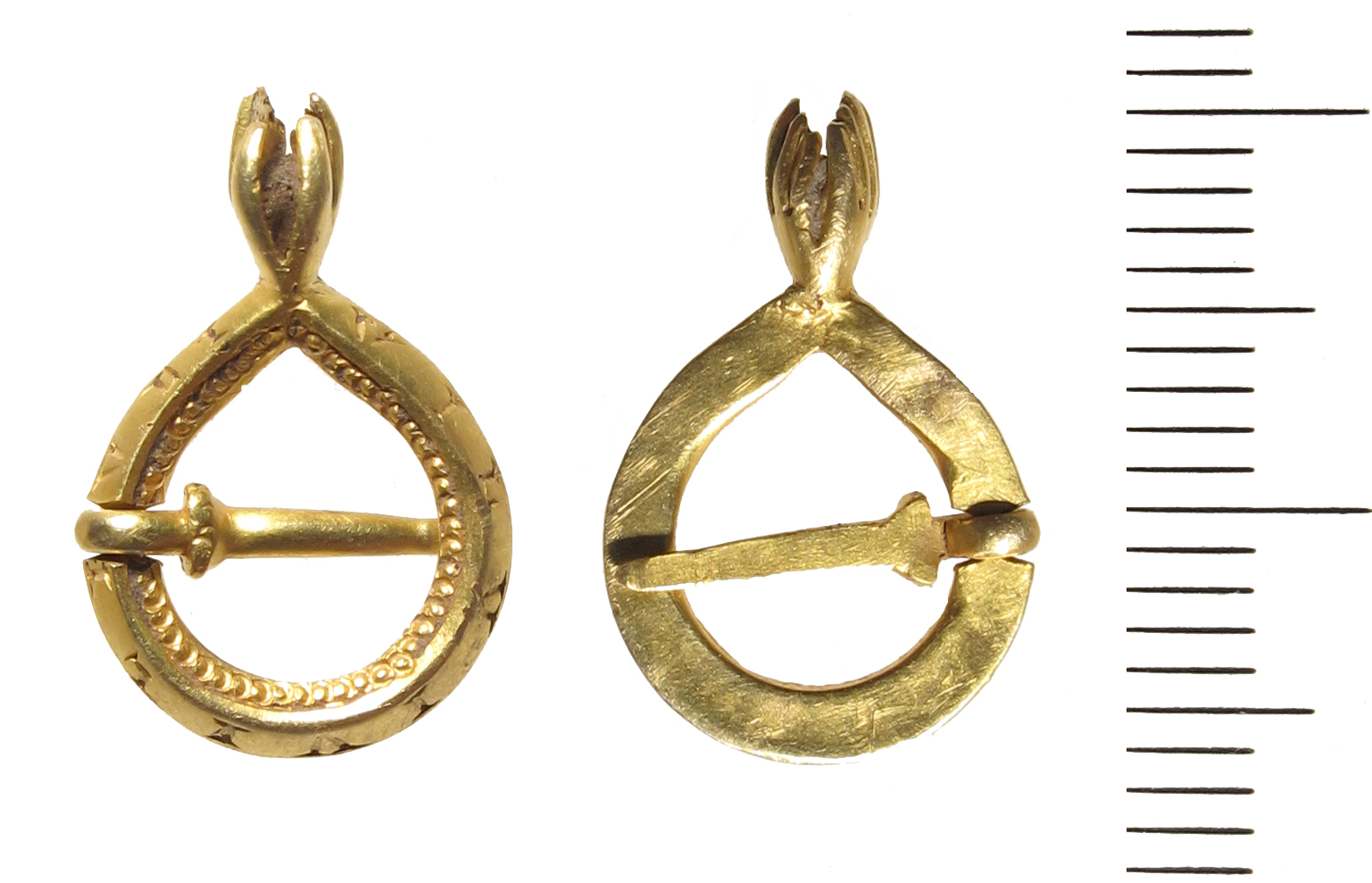
This second annular brooch is also a tiny example of the Medieval goldsmith's art and dates to the 14th Century. It features a pair of clasped hands and is the first example of this type of brooch to be collected by the museum. It is possible that the hands once held a small gem or glass bead- a similar example in the British Museum clasps an opal. The exterior of the band is inscribed with 'VILVIVILIVLI', but sadly the meaning of the inscription is unknown. Interestingly, a near identical ring in the collections of the Victoria and Albert Museum bears the very similar, but equally unfathomable inscription 'VLI IV : VL VL'. The V&A suggest that these rings may have been manufactured in France.
Comments
There aren’t any comments for this blog yet

